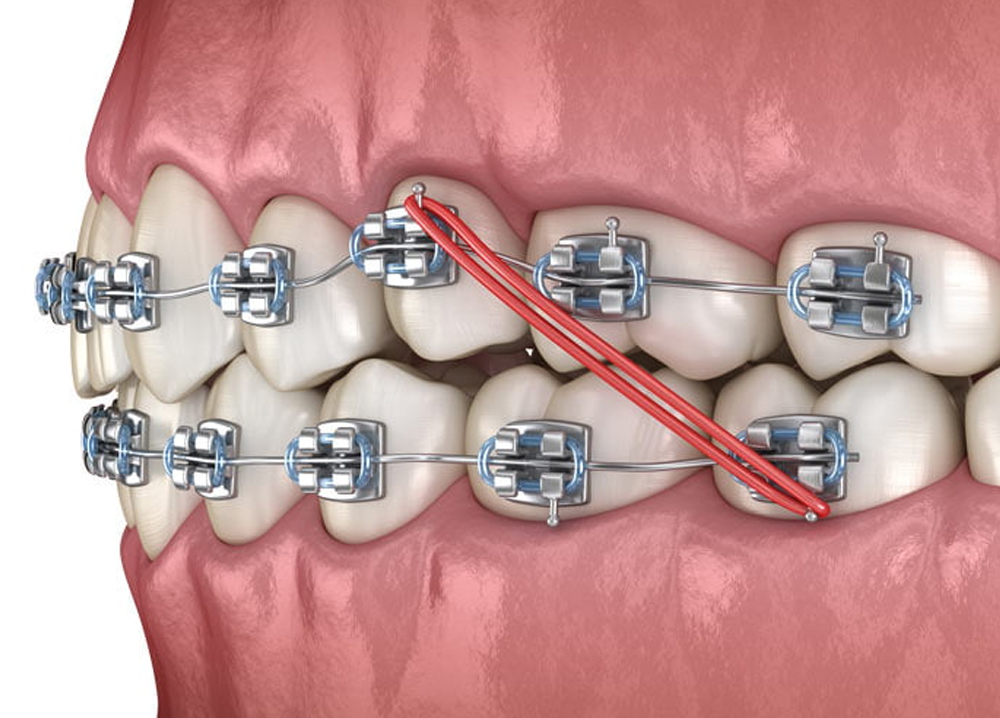Orthodontics

What is Orthodontics?
Orthodontics is the science of straightening crooked teeth. It is also commonly known as braces.
The causes of crooked teeth or mal-alignment of teeth are numerous. Amongst them are:
- Tooth-size discrepancy ie insufficient jaw space for all the teeth to erupt into good alignment.
- Early loss of teeth. The resulting space allows erupting permanent teeth to drift into them.
- Excessive or deficient jaw bones. This is a growth or developmental problem; genetic in origin.
- Parafunctional habits such as thumb sucking and tongue thrusting.
- Cleft lip/ palate and craniofacial syndromes. This is mal-alignment as a result of severe facial deformities.
Why treat mal-alignment of teeth?
The obvious reason is good looks and pleasant first impression. However, the other important reason is good functions such as speech, biting and chewing. Well-aligned teeth allows for easy maintenance and consequent good health because misaligned teeth tend to trap food and debris.
Methods of treatment
The main method is with brackets , commonly known as braces. These are metallic structures that are cemented onto the teeth surfaces. Using an arch wire, progressive light forces is applied to move the teeth in a very controlled direction. Brackets are usually made of metal. However, there are tooth-coloured ceramic brackets that are less conspicuous and lingual brackets that are hidden on the inner surface of the teeth, rendering them “invisible”.
Advances in clinical evidence and technology have generated a number of proprietary brackets. One of the them that is replacing “traditional” brackets is called Damontm . This system utilises very light force to align teeth. The main advantage is the comfort for the patient and lesser treatment visits. As for lingual braces, indivualised brackets are customised in the InCognitotm system.
The latest development in Orthodontics is Clear Aligners. Clear Aligners utilize 3D scanning and CAD-CAM technology. Computerised virtual planning and simulations are used to make sequential clear “plastic” aligners to systematically move teeth to their ideal positions. The aligners are clear and inconspicuous. This obviates the need for brackets and is ideal for adults. However, it must be stressed that there are conditions that are not suitable. The most established aligner is Invisaligntm. Others include Vincismile ,SureSmile, ClearAligner etc.
Other techniques or methods that can align teeth are:
- Removable appliances. These are plastic plates that can be removed from the teeth. Wires are incorporated onto the plates to move teeth.
- Growth modification. Treatment that is carried out early, before puberty to either lengthen or shorten the jaw bones.
- Micro-implants or TAD (Temporary Anchorage Devices) are implanted to serve as anchorage to
When can orthodontics start?
The optimal age to commence braces is when all the permanent teeth have erupted. This is usually during puberty, ranging from age 11 to 13 years old. However, an assessment before this age is appropriate to rule out other minor treatment that may be required earlier, such as when there is trapping of a single tooth or when the lower teeth is biting on the palate. The recommended age for this assessment is when the child is 7 years old.
For an adult who requires braces, there is no age limit as long as there is no medical problem.
Clinical Assessment
Before treatment can proceed, a proper diagnosis must be made with clinical examination, digital x-rays and study models or 3D scanning. A treatment plan with the final result in mind must be formulated and presented to you. This may include the need for extraction of some teeth and occasionally oral surgery or jaw surgery.


